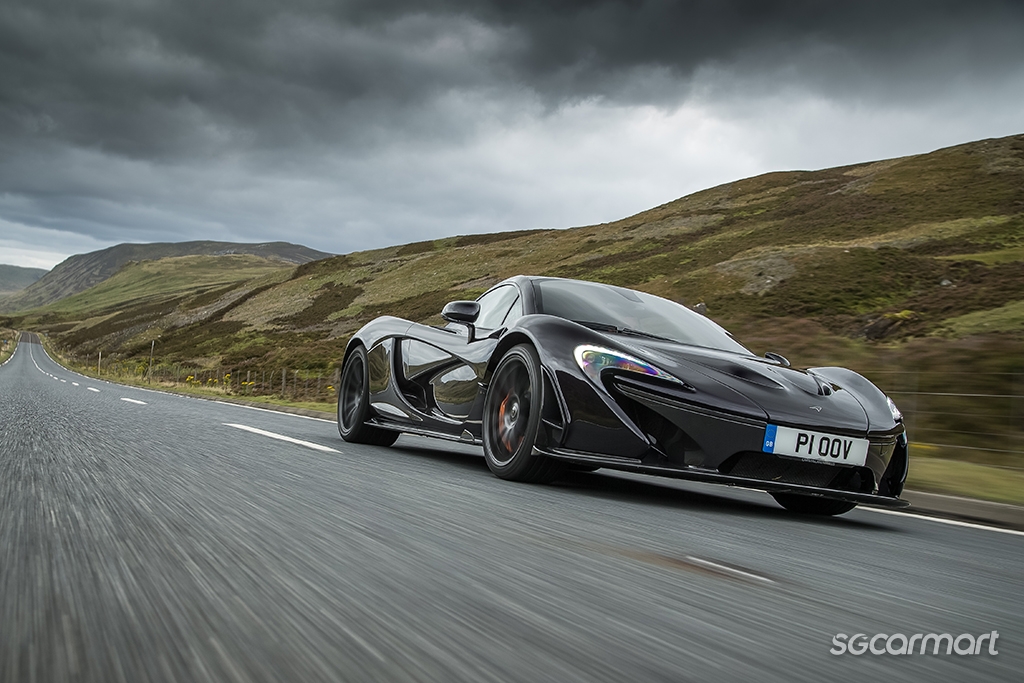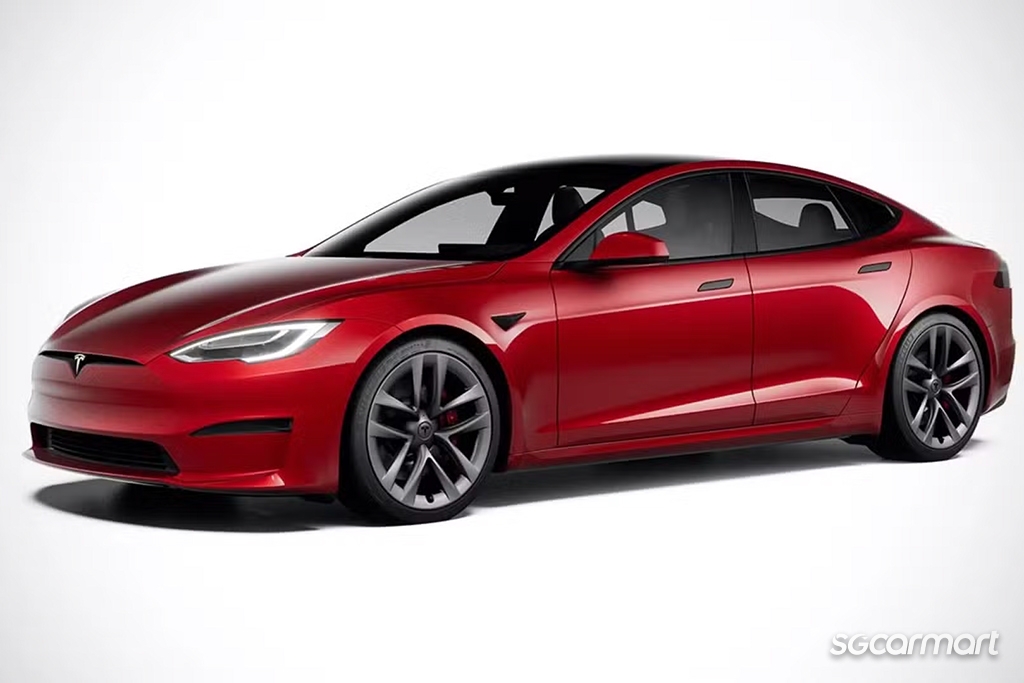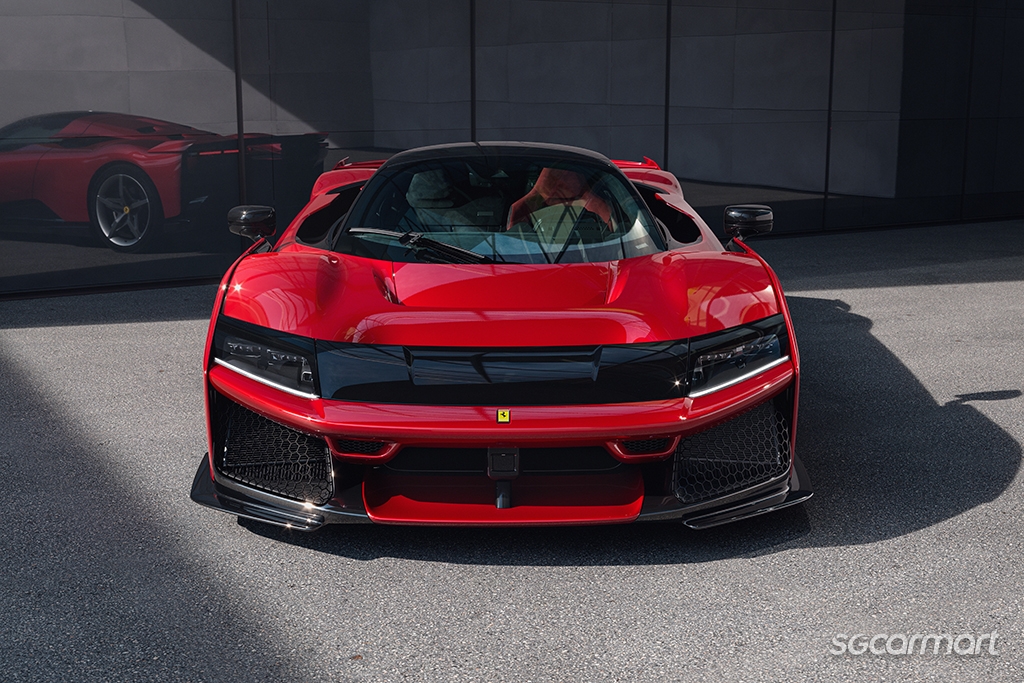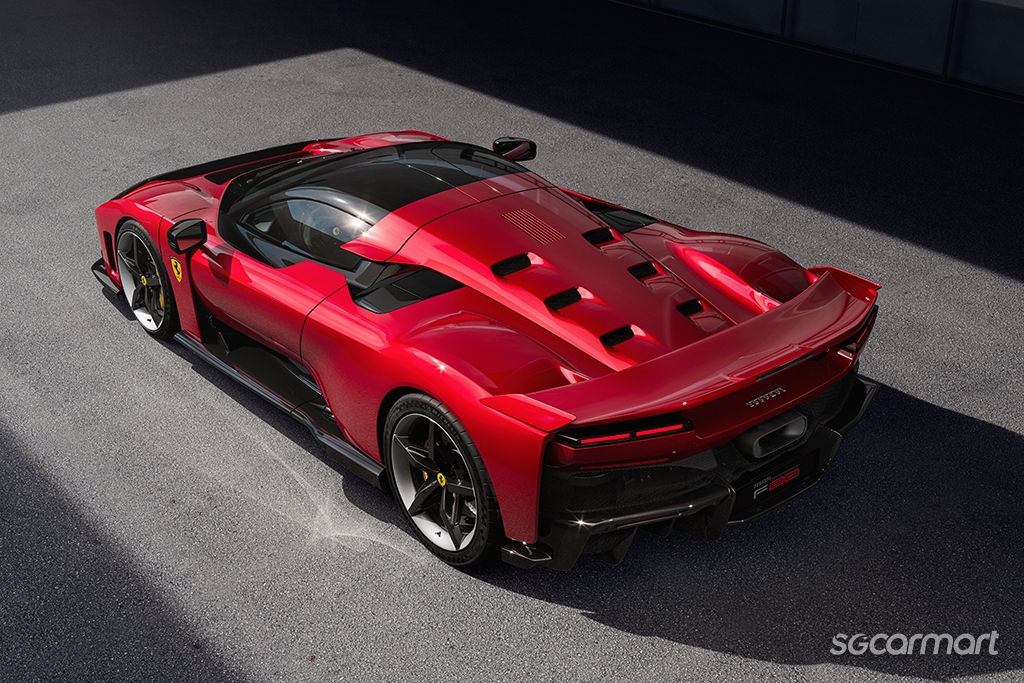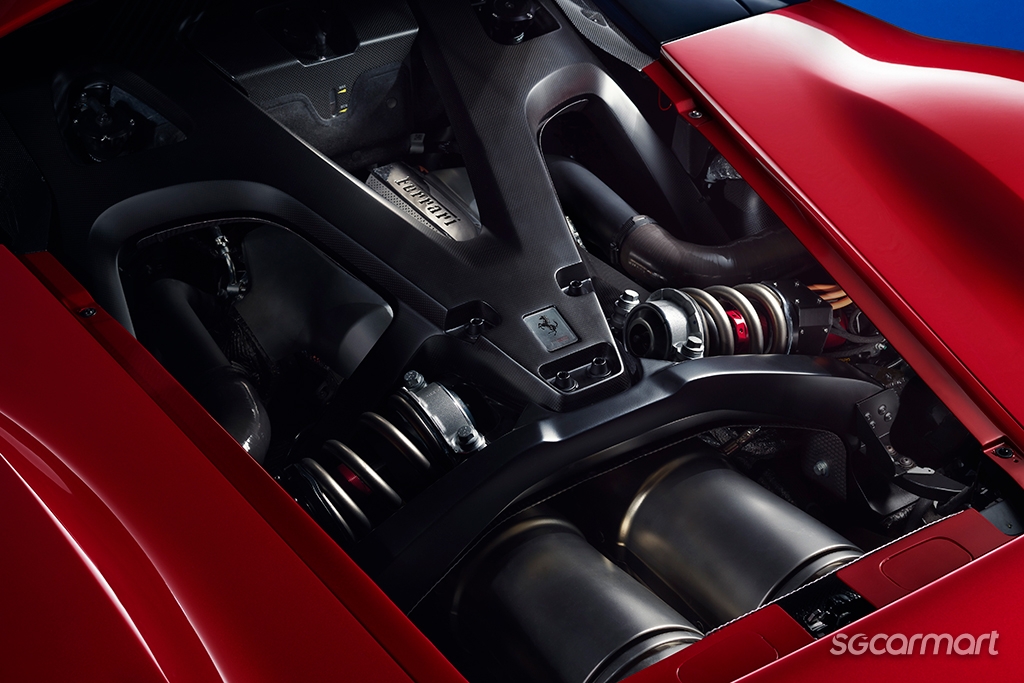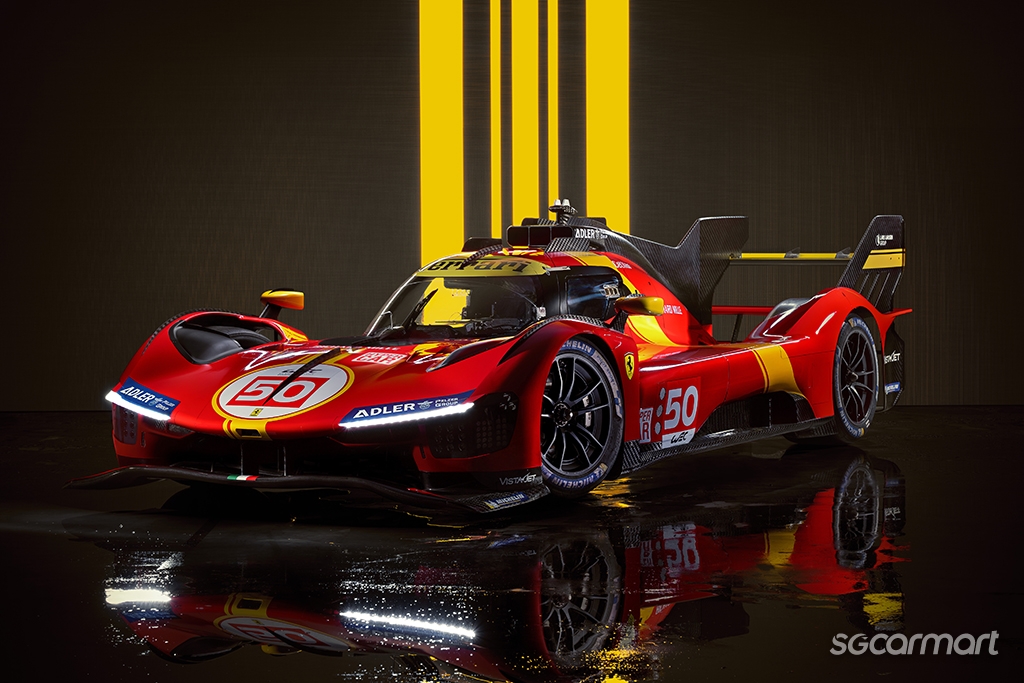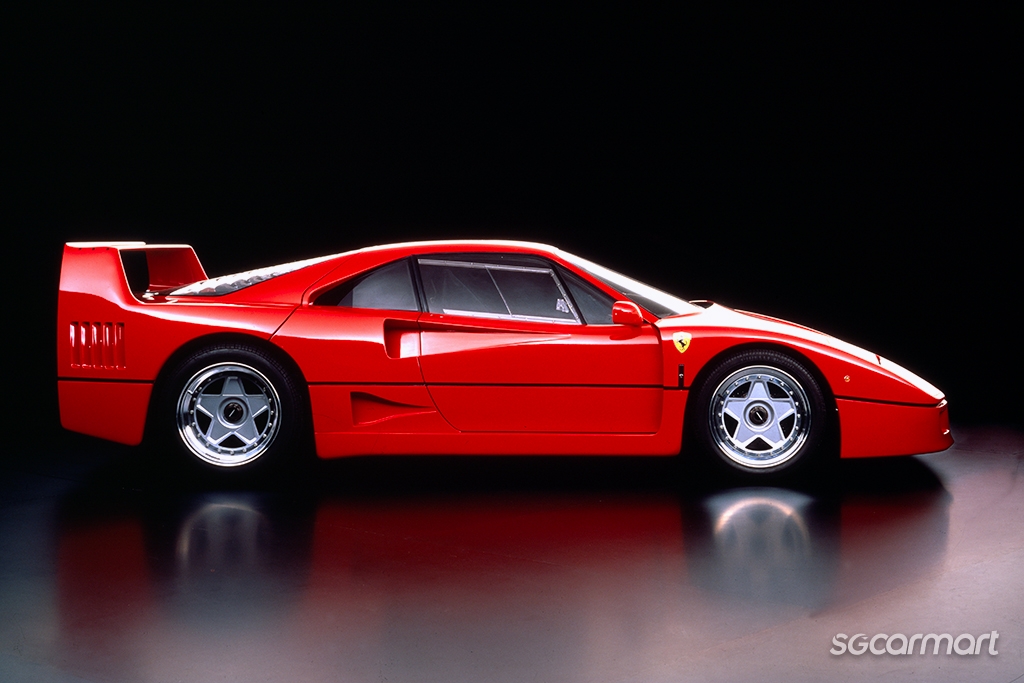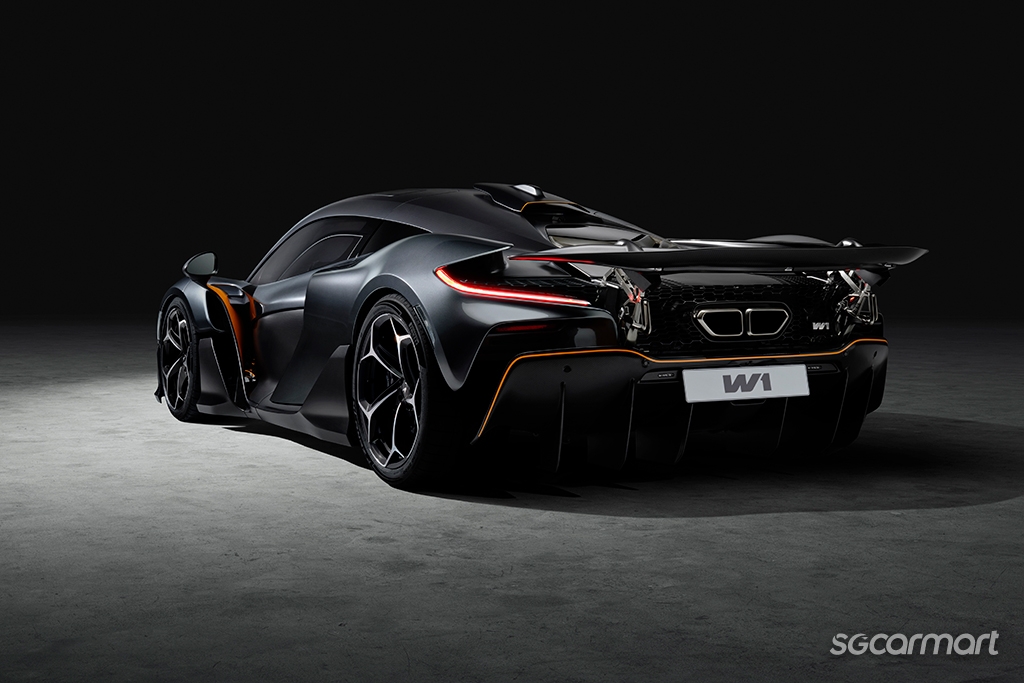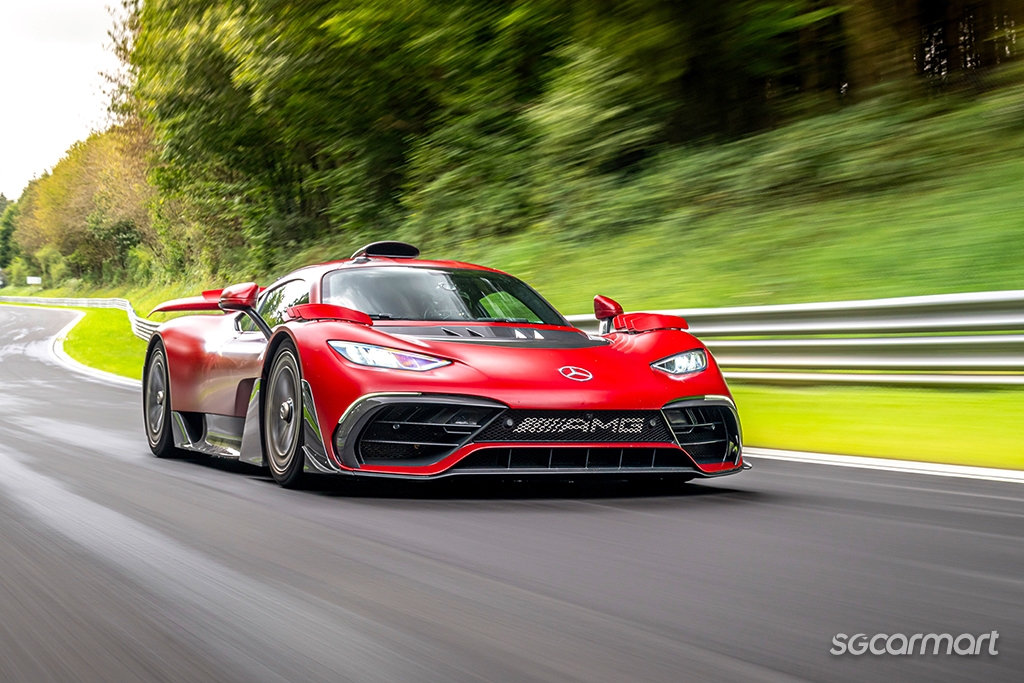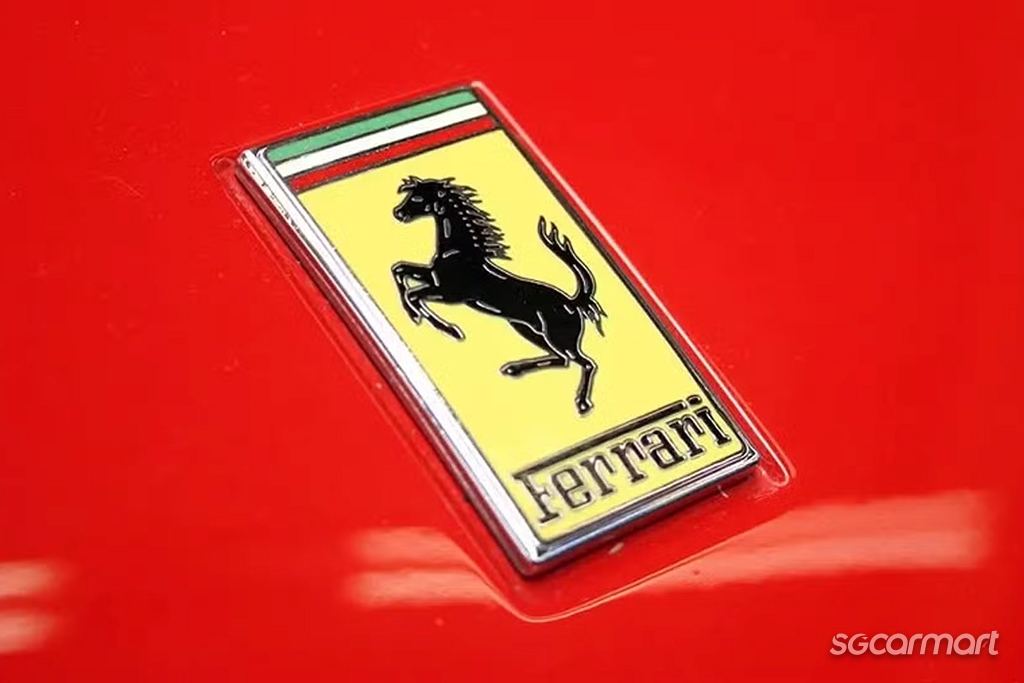The new Ferrari F80 and its place in the hypercar fraternity
25 Oct 2024|1,250 views
The Holy Trinity.
A fitting name for a trio of hypercars launched in the mid-2010s: The Ferrari LaFerrari, Porsche 918 Spyder, and the McLaren P1.
When launched, these were the most powerful road-going cars ever by each of these sportscar manufacturers. Their intense performance, high-tech capabilities and limited numbers made them highly sought after exotica. These were the halo models of three storied brands.
Alongside the LaFerrari, the 918 Spyder and P1 made up the Holy Trinity of supercars that were all launched in 2013
The 'Holy Trinity' was also coined because of a unique confluence of factors - besides the cars all being launched in 2013 (and in relative quick succession to one another), all three also adopted hybrid powertrains, which was a notable evolution for performance cars (and a prelude to the breadth of electrification to come). It felt like a pivotal moment for such cars, vaulting them from super to hyper.
2013 may be just nine years ago, but automotive performance has certainly evolved. The top-speed-hunting Bugatti Veyron's W16 engine (and the Chiron that followed) may have been a bit of an outlier, but in recent years the electric revolution has firmly taken a hold on performance cars. With tightening emissions standards and perhaps a ceiling of performance on traditional ICE powertrains, hybrid powertrains have more-or-less become the de facto option for supercar manufacturers.
Electrification has hyper-accelerated performance, literally - two four-door sedans now occupy the top 3 spots of the fastest accelerating cars in the world
But perhaps more telling is the fact that the top three fastest accelerating cars today do a century sprint in under 2.0 seconds, and other than the Rimac Nevera, the other two are ostensibly four-door family sedans (the Tesla Model S Plaid and the Porsche Taycan Turbo GT). And of course, all three are fully electric.
It is into this evolving landscape that Ferrari now introduces its LaFerrari successor - the F80. How relevant will it be?
Undeniable performance
The F80 delivers expectedly bombastic performance - a quoted 1,184bhp and a 0-100km/h time of 2.15 seconds.
And unsurprisingly, that performance gets a big helping of electric assistance. Gone is the screaming naturally aspirated V12, and in its a place a twin-turbo V6 with 'e-turbos' that allow it to develop a monstrous 887bhp on its own.
The F80 then gets a F1-derived MGU-K electric motor at the rear to provide assistance to the V6, as well as two electric motors at the front axle. Together, they deliver the extra 297bhp that brings the F80's total performance output past four figures.
Besides raw numbers, aerodynamics also play into a big part of the F80's design, and ultimately its true performance capabilities. With active suspension, an active rear wing, complex underbody aero, this F80 is purposeful right down to its core.
The result is a car that looks not far off from a Le Mans prototype racer. Just look at the squared-off vertical panel at the end of the front rear arches - Ferrari says it pays homage to the F40 (you can maybe see it), but you could just as easily imagine three lights housed within (à la a Le Mans race car). Beauty may be a highly subjective thing, but the F80 isn't what you'd call pretty - sculpted by a need to savagely dictate airflow rather than simply pencil on paper.
But performance itself can be slightly meaningless. Yes, perhaps Ferrari will eventually chuck a race driver into the car, fit it with super sticky tyres and attempt a record-setting lap of the Nordschleife, but even the brand knows that that level of ultimate performance has limited real-world bearing on the actual customer.
Race-tested technologies in the Le Mans-winning 499P (pictured) has expectedly been incorporated into the F80
When asked about it, Enrico Galliera, Chief Marketing and Commercial Officer, said during the press conference, "Our clients, most of our clients, never have enough in terms of power, even though only a small portion is able to manage [that power], it's true."
He concedes, "I'm not good enough to bring the car to the limit, I'm not a pilot. But I'm similar enough to a normal client to appreciate what this car is able to do, which is to give a sense of safety, a consistency with the ground that is incredible, coupled with an incredible comfort. Then, I'm not shocked by the performance because I'm expecting this, but I'm shocked by how this performance is manageable."
Undeniable demand
Beyond simply chasing performance, a halo car like the F80 is important to the brand story. It carries on a legacy of bedroom-poster stalwarts that began with the 288 GTO, then the F40, F50, Enzo and LaFerrari (individual examples of which were displayed at the press conference; a mindblowingly expensive five-car display).
These cars are more than performance. They capture the essence of the brand, but perhaps more importantly through their limited production capture the essence of customer demand. Cars like the F80 are elevated in status and desirability precisely because so few people can actually have one.
Timing also matters. McLaren unveiled its new halo model and P1 successor, the W1, on 6 October, 11 days before the Ferrari F80 was revealed. Porsche has also committed to a 918 Spyder replacement (potentially previewed by the Mission X concept), though that's likely still some time away yet.
Since the prior 'Holy Trinity', several other big-name manufacturers have also gotten into the hypercar, Nordschleife lap-time chasing space - Mercedes has its Mercedes-One, Aston Martin its Valkyrie, the Lamborghini Revuelto, on top of a handful of dedicated hypercar makers like Pagani, Koenigsegg and Rimac.
1,000+bhp electric monsters from the likes of Lucid, Zeekr and Lotus have further expanded (some could say diluted) this hypercar space.
And yet, the F80 has one thing going for it that no other brand can match - the Ferrari badge.
The F80 is easily the most expensive production Ferrari to be sold, and with 799 examples also the least limited. (Over 1,300 F40s were eventually produced, but when launched the production figure was supposed to be limited to around 400.)
And yet, the F80 completely is sold out, even before the model was officially unveiled. In a world where every other hypercar is ostensibly buyable, Ferrari manages to still set itself apart because you don't choose to buy the car - Ferrari does. Ferrari chooses which customers to offer the car to, and in fact had to say no to many willing buyers. The fact that Ferrari can increase the total production run knowing every single one will be spoken for speaks volumes. There's no official word yet of an open-top Aperta variant and perhaps even a track-only derivative (though both certainly will follow), but you know those will also be sold out (who knows, maybe they already are).
With an expanding landscape of ultra-performance cars driven by increasing electrification, perhaps a 'Holy Trinity' is already a relic of the recent past.
In the horsepower arms race, the F80's specific output doesn't make the top 10 - it doesn't even trump the W1. But maybe that doesn't fundamentally matter. Because at this point, performance is certainly important, but maybe not the singular most important thing.
Demand is. And in that aspect, still no other brand can come close to the Prancing Horse.
The Holy Trinity.
A fitting name for a trio of hypercars launched in the mid-2010s: The Ferrari LaFerrari, Porsche 918 Spyder, and the McLaren P1.
When launched, these were the most powerful road-going cars ever by each of these sportscar manufacturers. Their intense performance, high-tech capabilities and limited numbers made them highly sought after exotica. These were the halo models of three storied brands.
Alongside the LaFerrari, the 918 Spyder and P1 made up the Holy Trinity of supercars that were all launched in 2013
The 'Holy Trinity' was also coined because of a unique confluence of factors - besides the cars all being launched in 2013 (and in relative quick succession to one another), all three also adopted hybrid powertrains, which was a notable evolution for performance cars (and a prelude to the breadth of electrification to come). It felt like a pivotal moment for such cars, vaulting them from super to hyper.
2013 may be just nine years ago, but automotive performance has certainly evolved. The top-speed-hunting Bugatti Veyron's W16 engine (and the Chiron that followed) may have been a bit of an outlier, but in recent years the electric revolution has firmly taken a hold on performance cars. With tightening emissions standards and perhaps a ceiling of performance on traditional ICE powertrains, hybrid powertrains have more-or-less become the de facto option for supercar manufacturers.
Electrification has hyper-accelerated performance, literally - two four-door sedans now occupy the top 3 spots of the fastest accelerating cars in the world
But perhaps more telling is the fact that the top three fastest accelerating cars today do a century sprint in under 2.0 seconds, and other than the Rimac Nevera, the other two are ostensibly four-door family sedans (the Tesla Model S Plaid and the Porsche Taycan Turbo GT). And of course, all three are fully electric.
It is into this evolving landscape that Ferrari now introduces its LaFerrari successor - the F80. How relevant will it be?
Undeniable performance
The F80 delivers expectedly bombastic performance - a quoted 1,184bhp and a 0-100km/h time of 2.15 seconds.
And unsurprisingly, that performance gets a big helping of electric assistance. Gone is the screaming naturally aspirated V12, and in its a place a twin-turbo V6 with 'e-turbos' that allow it to develop a monstrous 887bhp on its own.
The F80 then gets a F1-derived MGU-K electric motor at the rear to provide assistance to the V6, as well as two electric motors at the front axle. Together, they deliver the extra 297bhp that brings the F80's total performance output past four figures.
Besides raw numbers, aerodynamics also play into a big part of the F80's design, and ultimately its true performance capabilities. With active suspension, an active rear wing, complex underbody aero, this F80 is purposeful right down to its core.
The result is a car that looks not far off from a Le Mans prototype racer. Just look at the squared-off vertical panel at the end of the front rear arches - Ferrari says it pays homage to the F40 (you can maybe see it), but you could just as easily imagine three lights housed within (à la a Le Mans race car). Beauty may be a highly subjective thing, but the F80 isn't what you'd call pretty - sculpted by a need to savagely dictate airflow rather than simply pencil on paper.
But performance itself can be slightly meaningless. Yes, perhaps Ferrari will eventually chuck a race driver into the car, fit it with super sticky tyres and attempt a record-setting lap of the Nordschleife, but even the brand knows that that level of ultimate performance has limited real-world bearing on the actual customer.
Race-tested technologies in the Le Mans-winning 499P (pictured) has expectedly been incorporated into the F80
When asked about it, Enrico Galliera, Chief Marketing and Commercial Officer, said during the press conference, "Our clients, most of our clients, never have enough in terms of power, even though only a small portion is able to manage [that power], it's true."
He concedes, "I'm not good enough to bring the car to the limit, I'm not a pilot. But I'm similar enough to a normal client to appreciate what this car is able to do, which is to give a sense of safety, a consistency with the ground that is incredible, coupled with an incredible comfort. Then, I'm not shocked by the performance because I'm expecting this, but I'm shocked by how this performance is manageable."
Undeniable demand
Beyond simply chasing performance, a halo car like the F80 is important to the brand story. It carries on a legacy of bedroom-poster stalwarts that began with the 288 GTO, then the F40, F50, Enzo and LaFerrari (individual examples of which were displayed at the press conference; a mindblowingly expensive five-car display).
These cars are more than performance. They capture the essence of the brand, but perhaps more importantly through their limited production capture the essence of customer demand. Cars like the F80 are elevated in status and desirability precisely because so few people can actually have one.
Timing also matters. McLaren unveiled its new halo model and P1 successor, the W1, on 6 October, 11 days before the Ferrari F80 was revealed. Porsche has also committed to a 918 Spyder replacement (potentially previewed by the Mission X concept), though that's likely still some time away yet.
Since the prior 'Holy Trinity', several other big-name manufacturers have also gotten into the hypercar, Nordschleife lap-time chasing space - Mercedes has its Mercedes-One, Aston Martin its Valkyrie, the Lamborghini Revuelto, on top of a handful of dedicated hypercar makers like Pagani, Koenigsegg and Rimac.
1,000+bhp electric monsters from the likes of Lucid, Zeekr and Lotus have further expanded (some could say diluted) this hypercar space.
And yet, the F80 has one thing going for it that no other brand can match - the Ferrari badge.
The F80 is easily the most expensive production Ferrari to be sold, and with 799 examples also the least limited. (Over 1,300 F40s were eventually produced, but when launched the production figure was supposed to be limited to around 400.)
And yet, the F80 completely is sold out, even before the model was officially unveiled. In a world where every other hypercar is ostensibly buyable, Ferrari manages to still set itself apart because you don't choose to buy the car - Ferrari does. Ferrari chooses which customers to offer the car to, and in fact had to say no to many willing buyers. The fact that Ferrari can increase the total production run knowing every single one will be spoken for speaks volumes. There's no official word yet of an open-top Aperta variant and perhaps even a track-only derivative (though both certainly will follow), but you know those will also be sold out (who knows, maybe they already are).
With an expanding landscape of ultra-performance cars driven by increasing electrification, perhaps a 'Holy Trinity' is already a relic of the recent past.
In the horsepower arms race, the F80's specific output doesn't make the top 10 - it doesn't even trump the W1. But maybe that doesn't fundamentally matter. Because at this point, performance is certainly important, but maybe not the singular most important thing.
Demand is. And in that aspect, still no other brand can come close to the Prancing Horse.
Thank You For Your Subscription.

















